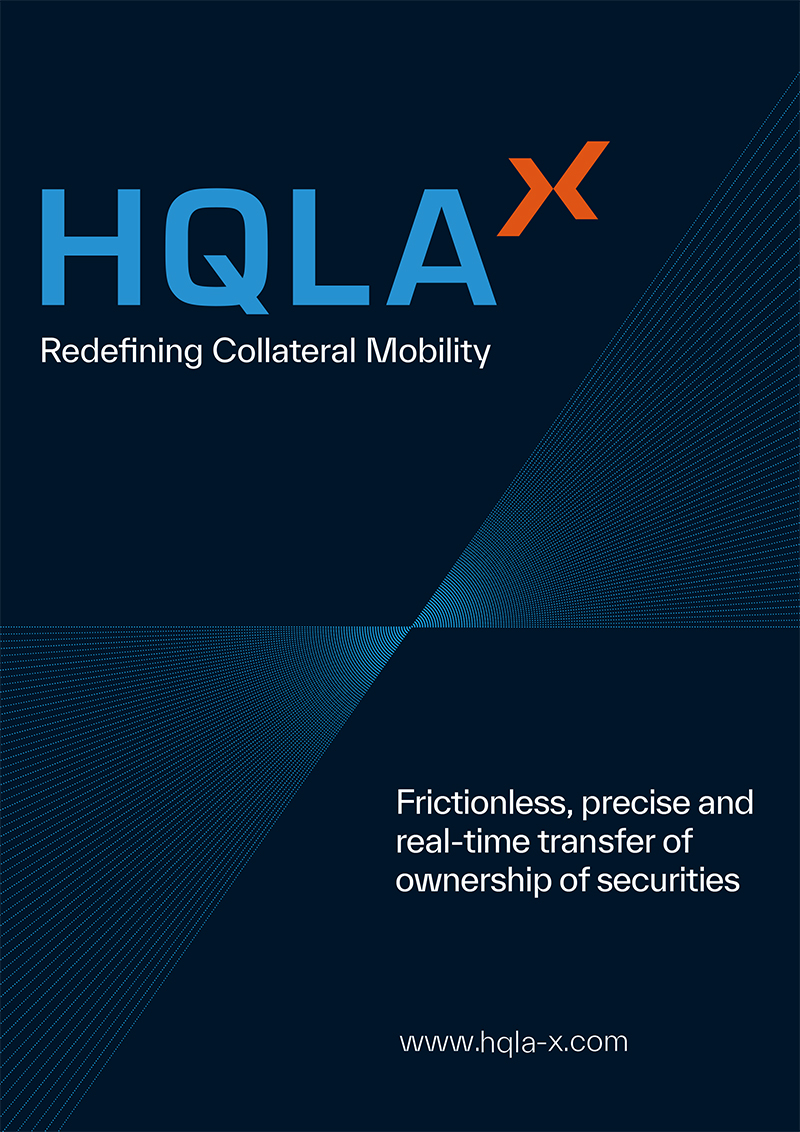Ed Tyndale-Biscoe, head of secured funding product and business development at Ion Group, explains the intelligent way to break free from legacy technology
How we think about secured funding, and how secured funding services are offered, have changed fundamentally in the last 20 years. But often, the platforms underpinning the market have not.
Secured funding first emerged as a front office business area in the late 1980s and early 1990s. Compared to today, the business back then was unrecognisable. Trades were captured over the phone and executed using paper tickets. Secured funding was more of a process than an asset class, so it did not have its own dedicated systems. Instead, it was built around existing technologies.
Our thinking and offerings have evolved a long way since then. But much of the technology used, from the front office to the back, still dates back to those early years.
What was once a process for an existing operation using available tools is now a business area in its own right, with its own technological requirements. Across secured funding markets, there are growing interdependencies that are systemically critical. The industry is resting a delicate, bespoke offering on an increasingly fragile framework.
It is time to harness the capabilities of new technology and simplify systems by taking a smart approach to upgrades.
Time for action
The problem is clear. So what are the options for fixing it? Firms can replace their whole framework at once. Alternatively, they can update their framework over time. Or they can simply ignore the problem until the inevitable happens.
Continuing to rely solely on legacy technology presents a fundamental barrier to the business. Workarounds, complex data mapping, and mismatched technologies result in enormous wastes of time, energy, and resources. In the short term, these make-do-and-mend solutions might get the job done. But they hamper the firm’s ability to scale or develop new capabilities.
Over time, the overheads and operational headaches of continuing with an existing system only get worse. Rising technology costs, and the resulting inability to trade as effectively, are eventually passed on to the client in one form or another. This undermines the firm’s competitive advantage.
So firms face a choice. They can either replace their systems wholesale, or they can renew them slowly and carefully over time.
Clean break or a wrong turn?
Firms can be tempted to make a clean break and replace their entire systems. The appeal of fresh, new technology, designed for the evolving needs of the business and built on the latest, shiniest ideas, can be hard to resist. Surely, the benefits must outweigh the costs?
The results, however, can be disappointing. Large-scale system replacements often have a serious flaw — they are driven by technology and not by the real needs of the business. They do not focus on providing business benefits to end users as early as possible in the process.
Proceeding this way, without buy-in and (long term) patience from the business, runs risks that should not be underestimated.
A better way: the hybrid approach
Fortunately, there is a way to avoid many of these pitfalls. And it does not have to disrupt a firm’s day-to-day operations.
Thanks to new technology, systems can now be replaced gradually over time. Service-oriented architectures in trading systems have developed into loosely coupled, modular, or microservices architectures. These allow firms to take advantage of cloud-based computing and spread out the risk involved in replacing wholesale enterprise systems.
End users can benefit immediately from flexible, intuitive, real-time solutions. But there is also time to upgrade, and eventually replace, downstream integrations and data at a calmer pace that makes it easier to manage risk.
Firms can take a hybrid approach and layer their new technology on top of their existing infrastructure. This removes the need for a one-time big bang upgrade. So it avoids the costs and productivity challenges of a big bang. And, at the same time, it eliminates the risks of continuing to depend on outdated legacy technology.
In this way, firms can preserve the sophistication of the systems they have built up, while reducing the risk of introducing a new system. They can sidestep the dangers of new and old technology and enjoy the benefits of both.
This is often the better strategy. And it is one that increasing numbers of firms are pursuing, both in secured funding and across other asset classes.
Making this approach feasible requires a solution that offers a choice of functionality, coupled with simple integration options.
ION Anvil: advanced technology you can build at your own pace
ION was founded on the conviction that combining innovative, personalised technology solutions with timely and insightful information would transform capital markets for financial institutions worldwide.
Anvil, ION’s solution for secured funding, provides rich functionality for repo and securities lending desks. Users can manage all their business needs with a scalable solution that fits desks of any size.
Anvil comprises three independent, interoperable products built on ION’s core platform. Users get a powerful set of business tools that they can adapt for their specific needs to gain a leading edge.
Anvil is componentised, offers comprehensive open APIs, and provides data in real time. So it is easy to layer Anvil’s advanced features on top of existing legacy infrastructure, which can then be replaced gradually.
The solution can be deployed on-premises or hosted in the ION Cloud:
• ION Anvil e-trading lets dealers see a real-time, aggregated view of global repo markets, determine best prices, and execute trades by operating on a single, virtual market. With out-of-the-box connectivity to all global repo markets for trading market data providers, plus simple STP integration, you can see all your markets and execute orders according to your chosen strategy in one user interface. That means you can take advantage of the best opportunities.
• ION Anvil OMS enables dealers to capture and respond to client inquiries across multiple channels, including request for quotes (RFQs), emails, chats, and voice. They can also initiate orders and route them to lenders. Designed to digitise and optimise repo and securities lending order management, Anvil OMS captures all flows, generates orders, and consolidates decision-making. It provides risk limit checking and automated pricing, as well as a clear and flexible sales-to-trader workflow.
• ION Anvil Trade Processing is a single solution for repo and securities lending, allowing you to manage liquidity across all trading types and asset classes. You can manage positions and availability, trade capture and lifecycle, billing, and collateral for all funding activities. Anvil Trade Processing supports simple, complex, and structured products, real-time P&L, and transfer pricing.
Facing the future with confidence
Urgently upgrading technology is a challenge that is not going away. Market participants demand flexibility with no loss of functionality. Both are necessary to remain competitive in a highly disruptive and systemically important environment.
Fortunately, businesses can now take advantage of flexible, intuitive solutions that are easier to integrate with legacy technology and can be replaced at a more controlled pace.
The digital transformation of secured funding has a long way to go. There’s a lot of work still to do. However, as we look forward, the possibilities enabled by new and innovative technology can only give us encouragement.


